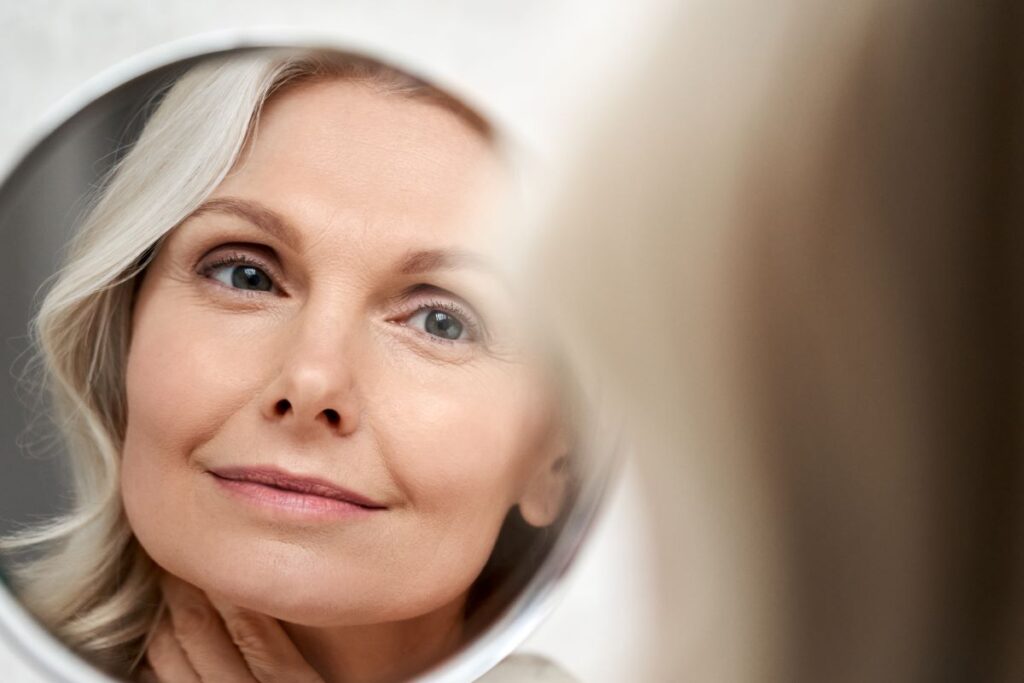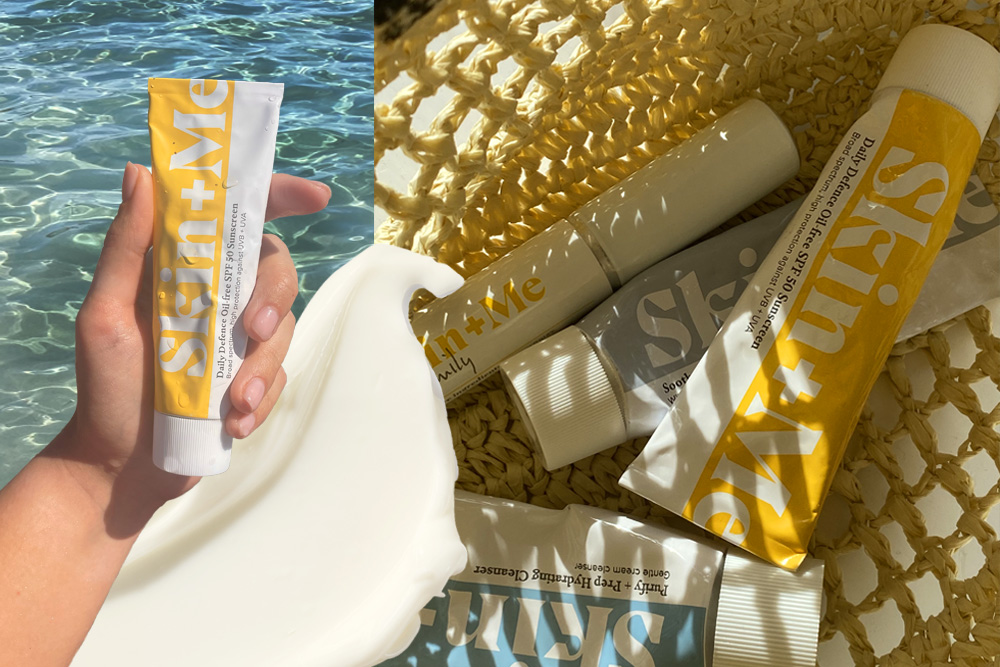Ask A Dermatologist: Why Are Sunscreen Filters So Important?

Link to share article here:
Ask A Dermatologist: How Do I Care for Menopausal Skin?
Menopause is a milestone, but it also signifies a period of change. There are many shifts happening, but it’s also an opportunity to reset the balance, switching focus to our own health and wellbeing.
So, what actually happens to your skin during the menopause, and how can you adapt your skincare routine to your new phase of life? We spoke to Dr Ben Esdaile, Consultant Dermatologist at Skin + Me, to find out.
What impact does menopause have on my skin?
Menopause can have a big impact on a woman’s skin, and this is mainly to do with the role of oestrogen. Oestrogen production drops after the menopause, and as oestrogen receptors are actually found in the skin, these changes can be reflected there.
If you feel like you’re reaching for the moisturiser more often then that’s to be expected. “After menopause, in oestrogen deficient skin, there is a decrease in oil production” explains Dr Ben. “Some people may see a complete transition from oily skin to dry.”
And, collagen and elastin production is also affected by a drop in oestrogen – in fact, “studies have shown a 30% reduction in collagen in the skin in the first five years of menopause,” says Dr Ben. These proteins are the building blocks of your skin, and are intrinsically linked to skin elasticity, firmness and wound healing. A drop in collagen and elastin can result in accelerated skin thinning, fine lines and wrinkles.
On the plus side, the hormonal shifts and the impact on our skin associated with the menstrual cycle should calm down. Many women also find that hormone triggered acne ceases or improves upon reaching menopause, although hormone replacement therapy (HRT), which is a common treatment during menopause, can also trigger acne in some cases.
How should I change my skincare during the menopause?
Your skin might undergo several changes during menopause, but the good news is that a strong skincare routine can make a huge difference.
If your skin is feeling dryer than before, an ultra-hydrating moisturiser is a good investment. Moisturisers containing shea butter can be beneficial to help restore the skin barrier, like the Rich edition of our Skin + Me Soothe + Smooth Moisturiser.
Our Soothe + Smooth Moisturiser also contains hyaluronic acid, another superstar hydrator. “Hyaluronic acid is another good moisturising ingredient to look out for in your skincare as it functions as a humectant. drawing in water from the environment and the deeper layers of your skin,” explains Dr Ben.
There are also several active ingredients which can help support changing skin during the menopause. The loss of collagen during the menopause contributes to increased appearance of fine lines, so boosting collagen production will be your number one priority.
If you weren’t using them already, now is the time to introduce retinoids. Retinoids, such as retinol and tretinoin, are derived from vitamin A and are the gold-standard topical treatment for fine lines and wrinkles. They accelerate skin cell turnover and increase collagen production, so they should be an essential part of your menopausal skin routine. Niacinamide is also a fantastic active ingredient for menopausal skin – it’s an antioxidant that boosts collagen and ceramide production while reducing inflammation.
It’s important to use active ingredients cautiously in menopausal skin, as increased dryness and thinning means the skin can be more prone to side effects and irritation. We’d recommend that you go slowly, don’t overdo it, and increase the potency gradually, to build up tolerance. The Skin + Me Daily Doser is packed with active ingredients and tailored to your needs – it also changes over time as your skin adapts.
All skin needs to be protected from the effects of the sun, but it’s extra important to protect menopausal skin, and even more important if you’re using active ingredients. “UVA rays penetrate deeper into the skin and cause damage to the scaffolding proteins that hold the skin firm,” says Dr Ben. “Damage to the scaffolding results in the wrinkles and skin creases seen in sun damage, also known as photoageing. We also recommend that your sunscreen has broad-spectrum coverage against UVA rays to protect against this damage – our Daily Defence Oil-free SPF 50 Sunscreen ticks all these boxes.
The bottom line
It’s inevitable that your skin will change over time, so you need to adapt your routine to suit your new phase of life. Menopause can be challenging, but with the right care and attention you can keep your skin hydrated and glowy. Use it as an opportunity to indulge in some self care and spend some time getting your skin used to your new routine – and remember that the Skin + Me Dermatology Support Team is always here to help with anything you need.
New to Skin + Me? Get your first month of personalised skincare for £4.99 with promo code DOSE – complete our quick consultation here.
Looking for a routine refresh? Add the Dream Routine to your Skin + Me subscription.
In need of a restock? Head to The Skincare Shop for one-off purchases of your Routine Essentials.



